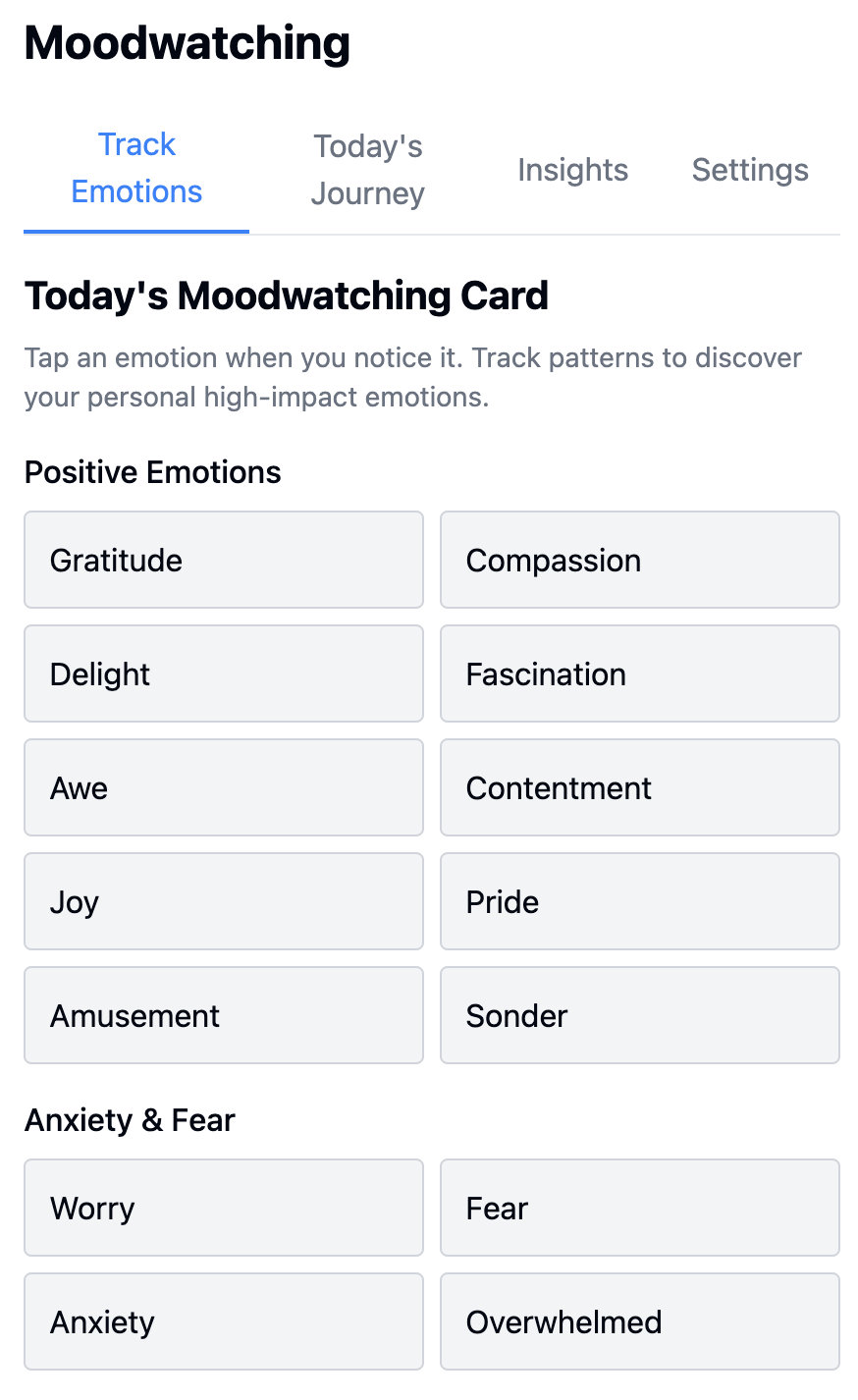Wed Jul 16 - Written by: Brendan McNulty
Week 29: Using AI to Track Emotions

Week 29: Using AI to Track Emotions
(Building a quick emotion tracker that I promptly ignored)
The Experiment
While reading about CBT and emotional intelligence, I stumbled across an article about mood-watching—tracking emotions in real-time rather than relying on memory. While the concept made sense, the author’s paper-based approach seemed needlessly analog. I decided to build a digital tool to track emotions with minimal friction and then to ascend to higher being status once I know myself better and control all my emotions.
The Process
Here’s how I tackled it:
1. Defining Requirements
I wanted something that required almost no overhead—if it takes effort, it never gets used. It needed to capture positive and negative emotions with one tap, with the potential to reveal patterns over time.
2. Working with Claude
I asked Claude to sketch a solution. In a surprising turn, I barely finished typing before it produced a working design—I literally hit enter before completing my prompt.
3. The Design
The interface included:
- A tab system with “Track Emotions,” “Today’s Journey,” “Insights,” and “Settings”
- Categories for different emotion types (Positive Emotions, Anxiety & Fear, Anger & Frustration)
- One-tap emotion recording
- A simple counter for frequency
4. Implementation
After minimal refinements to the UI, I quickly turned it into a web app. The whole process was surprisingly fast—no wrestling with complex setups or multiple iterations.

The Outcome
Here’s the uncomfortable truth: I built it, put it on my phone, and then… barely used it. Despite all my talk about “minimal friction,” the reality is that I didn’t reach for it when experiencing emotions. It sat there like a digital vitamin—theoretically good for me, but not solving an actual pain point (maybe I needed to hit the boredom button more often?)
This speaks to a fundamental product development issue: I needed to do more customer discovery on myself. The tool worked perfectly from a technical standpoint, but it wasn’t a painkiller—it was a vitamin. And vitamins, no matter how well-designed, don’t get used consistently if they’re not addressing a genuine need.
Key Takeaway
Building functional tools with AI is remarkably easy. Understanding whether those tools solve real problems is much harder. In my rush to create something, I skipped the crucial step of validating whether I actually had a problem worth solving. The diary from Week 2 worked because it addressed a specific pain point—capturing daily highlights before they were forgotten. This emotion tracker? Not so much (for me)
Pro Tips for AI Tool Development:
- Start with the Problem, Not the Solution: I got excited about the technical possibility rather than identifying a genuine pain point
- Distinguish Painkillers from Vitamins: If you’re not naturally reaching for your tool, it’s probably solving a problem you don’t actually have
- Customer Discovery Applies to Personal Tools: Even when building for yourself, validate the problem first
What’s Next?
- Back to the drawing board on what emotional awareness problems I actually need to solve (I know psychological impacts are a major use case, but I’m yet to find a great version for me)
- More customer research (on myself) about what would genuinely be useful
- Maybe the real insight is that paper tracking worked for the original author for reasons I didn’t consider
This was a useful reminder that AI makes building solutions incredibly easy—perhaps too easy. The real challenge remains understanding what’s worth building in the first place.